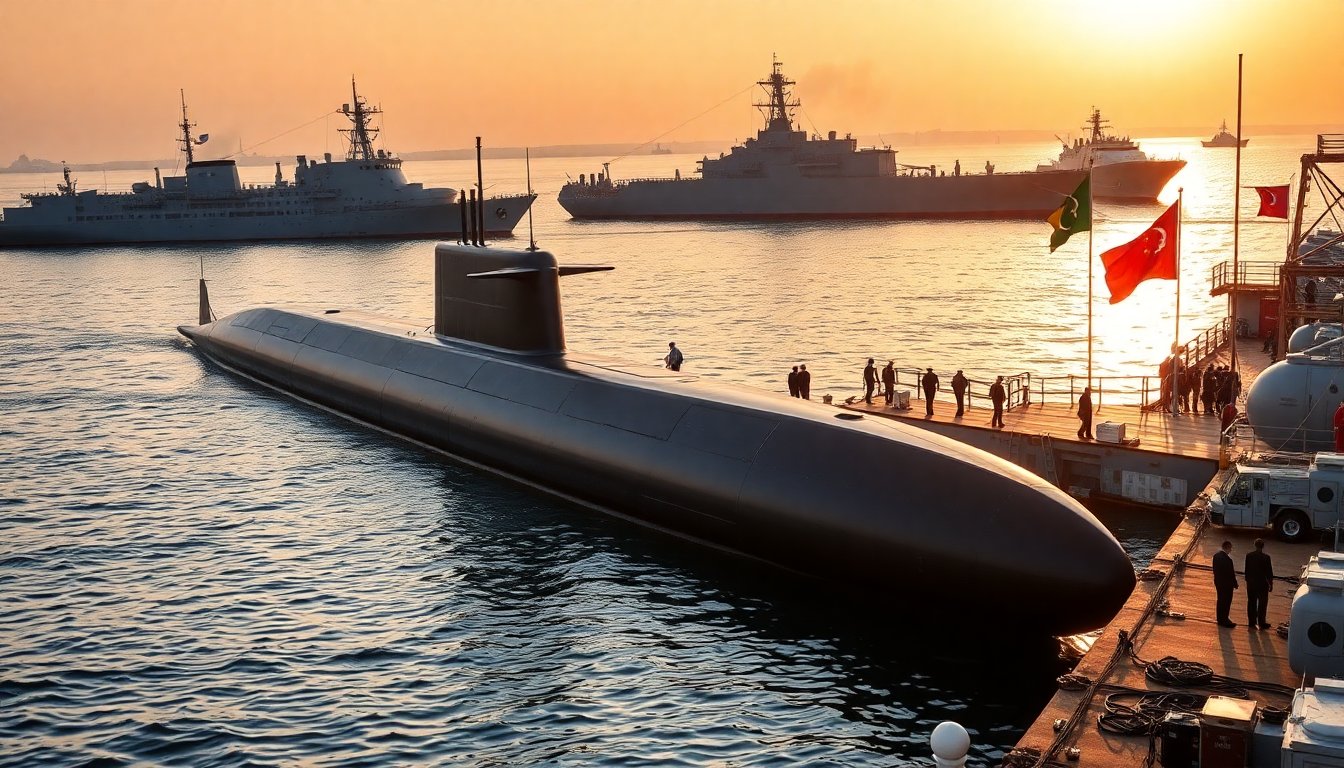Table of Contents
The ongoing military cooperation between Pakistan and China is reaching a significant milestone with the introduction of the Hangor-class submarines. These submarines are expected to be operational by, representing a pivotal shift in Pakistan’s naval capabilities and enhancing its defense strategy.
This collaboration emphasizes not only technological advancements but also the growing interdependence between the two nations in military affairs.
Admiral Naveed Ashraf, the chief of naval staff of Pakistan, recently discussed the progress of this submarine program, highlighting its importance in strengthening Islamabad’s maritime power.
The first of these conventionally powered submarines is scheduled to launch next year, marking a notable advancement for Pakistan’s naval forces.
Strengthening naval capabilities through collaboration
In an interview with the Global Times, Admiral Ashraf indicated that the Hangor-class submarines are more than just additions to the fleet; they are part of a broader initiative aimed at enhancing self-reliance through technology transfer and skill development.
This effort underscores the close ties between Beijing and Islamabad, particularly in defense procurement.
The submarines, equipped with advanced features, are expected to meet Pakistan’s operational needs in the North Arabian Sea and Indian Ocean. Admiral Ashraf noted that adopting Chinese-origin platforms has proven reliable and technologically superior, aligning well with the operational requirements of the Pakistan Navy.
Emerging technologies and future focus
As warfare continues to evolve, the Pakistan Navy is increasingly concentrating on emerging technologies such as artificial intelligence and uncrewed systems. Admiral Ashraf expressed the navy’s commitment to integrating these advanced technologies, which are essential for maintaining a competitive edge in modern combat scenarios.
Moreover, the collaboration with China goes beyond acquiring hardware; it reflects a mutual strategic outlook that promotes greater interoperability and technological exchange. This partnership aims to collectively enhance the capabilities of both naval forces, ensuring preparedness for any regional challenges.
Strategic implications for regional dynamics
The enhancement of Pakistan’s naval capabilities carries significant implications, particularly concerning its regional neighbor, India. With India operating several advanced submarines, including nuclear-powered vessels, the introduction of the Hangor-class submarines could shift the balance of power in South Asia. This deal, reportedly valued at around $5 billion, includes the construction of four submarines in China, with the remaining units assembled in Pakistan, thereby strengthening local manufacturing skills.
This military collaboration transcends a mere arms deal; it reflects a deep-rooted partnership that has developed over decades. Pakistan stands as the largest importer of Chinese military equipment, accounting for approximately 63% of China’s arms exports, which underscores the significance of this relationship. Such dynamics illustrate how defense partnerships can shape regional security frameworks.
Broader economic ties and implications
Additionally, the China-Pakistan Economic Corridor (CPEC) plays a critical role in this partnership, linking China’s Xinjiang region to Pakistan’s Gwadar Port. This corridor is pivotal for economic growth, enhancing military logistics and connectivity, while allowing China to secure its energy routes from the Middle East and maintain a strategic foothold in the region.
As developments unfold, the modernization of the Pakistani Navy with these new submarines is likely to influence regional military strategies and alliances. Both nations are set to reinforce their military cooperation, which may involve further advancements in naval training, technology sharing, and joint exercises, ultimately shaping the maritime landscape of South Asia.





